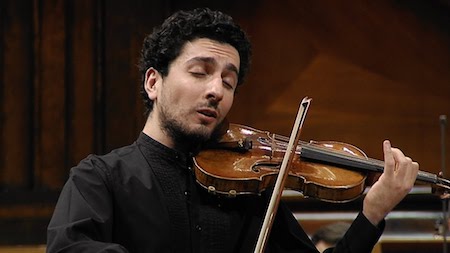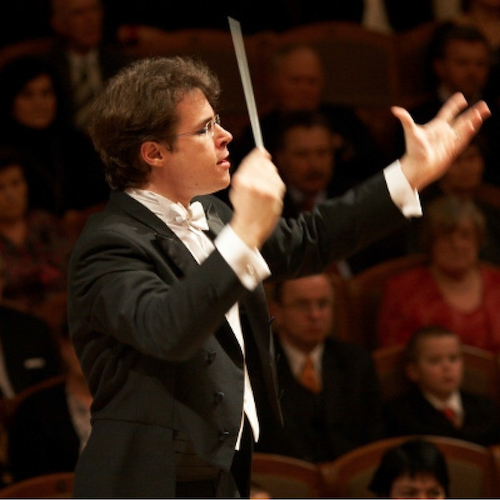by Daniel Hathaway

Armenian violinist Sergey Khachatryan brought not only his calm yet thrilling virtuosity to the Brahms concerto but also a storied instrument to play it on: the 1740 Guarneri violin that Eugene Ysaÿe called “the faithful companion of my life,” an instrument that was also once owned by Charles Munch and Isaac Stern. In his compelling performance, Khachatryan proved that the violin still had new stories to tell.
Guest conductor Jakub Hrůša set up a suspenseful, slowly unfolding introduction to the first movement. Khachatryan responded with a similarly unhurried exposition of the solo part, playing sweetly and tenderly and creating a lovely dialogue with the Orchestra’s violins. Grand tuttis provided a fine contrast, and the violinist’s playful, introspective cadenza led to an exquisite denouement before a bravura ending.
The Orchestra’s wind section sounded superb in the Adagio, supporting both Jeffrey Rathbun’s elegant oboe solo and William Preucil’s violin solo, which emerged magically from within the wind band. Although such virtuosi as Pablo de Sarasate bristled at the thought of standing silent during that introduction, Khachatryan seemed to welcome the opportunity to luxuriate in the moment.
Gently paced by Hrůša and fastidiously played by Khachatryan, the finale turned into an infectious gigue when the meter changed to 6/8. The audience reacted to this unusually penetrating performance with an instant standing ovation, and the violinist responded charmingly with an Armenian traditional song remarkable for its double-stops in parallel fourths.
Only Karel Ančerl, in 1971, and Libor Pešek, in 1992, had previously led The Cleveland Orchestra in Joseph Suk’s Asrael Symphony. The work is named after the Angel of Death in Abrahamic religious traditions — who had cut down both the composer’s father-in-law, Antonín Dvořák, and his wife, Dvořák’s daughter, while Suk was writing the piece. On Thursday, Jakub Hrůša brought his view of the sprawling, five-movement symphony to Severance Hall, demonstrating both its allure and its prolixity.
Conducting from memory, Hrůša drew bold, colorful playing from the ensemble, clearly emphasizing its striking, four-bar “Asrael” theme every time it appeared — which was frequently. The volatile Scherzo provides several varieties of contrast to the two movements that preceded and followed it, but the hour-long symphony, for all its orchestrational brilliance, began to fatigue the ear three-quarters of the way through. The Orchestra gave it a plush, committed performance, and Hrůša acknowledged multiple soloists and sections that had made distinguished contributions.
Published on ClevelandClassical.com April 10, 2018.
Click here for a printable copy of this article




